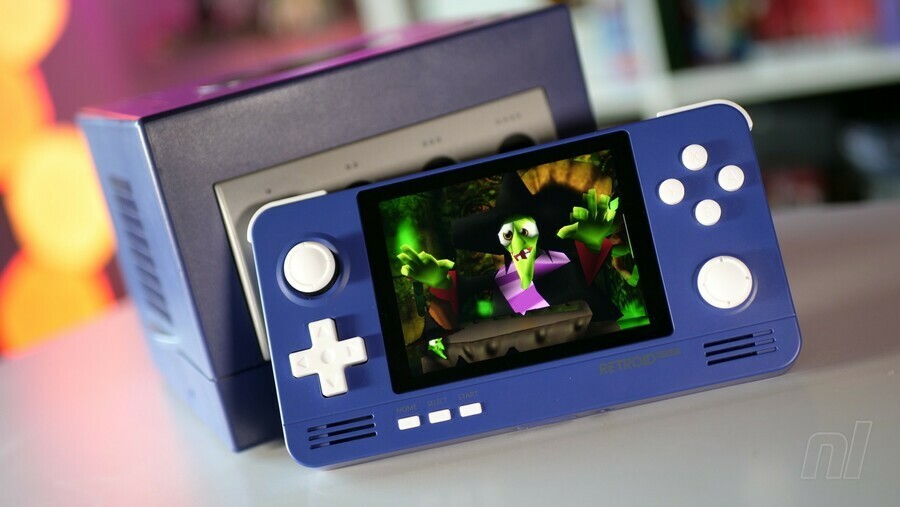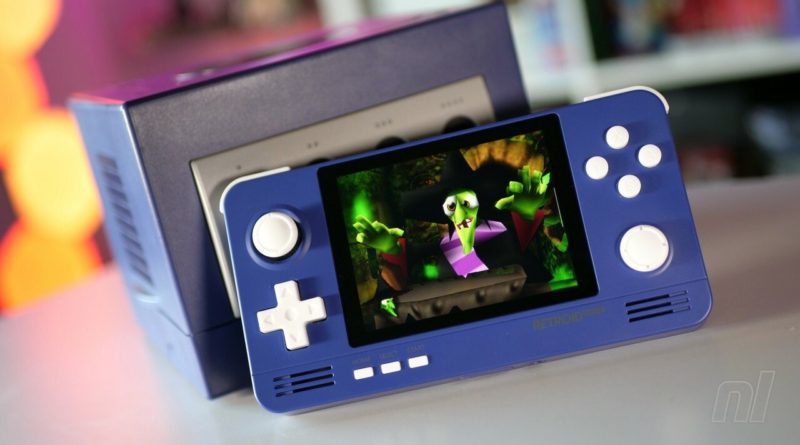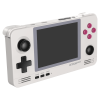Review: Retroid Pocket 2+ – A Vast Improvement Over Its Forerunner

You may well look at images of the shiny new Retroid Pocket 2+ and think you’ve seen it somewhere else before – that’s because this is an iteration on the original Retroid Pocket 2, which we covered last year. As before, it’s an Android-powered device with a focus on gaming and emulation, but the team at GoRetroid has been hard at work fixing some of the issues we had with the original – as well as boosting its internal specifications.
However, as we alluded to in that opening paragraph, you’d be forgiven for assuming this is the same system as the standard Retroid Pocket 2 at first glance. The body remains identical, as does the 3.5-inch 640 x 480-pixel display – however, the latter now has a touch interface, which solves one of the biggest complaints we had with the original Pocket 2. The handheld is available in a range of colours, and the Nintendo influence is clear – three of those options are based on the SNES, Game Boy and GameCube, the latter being the one we’re reviewing here.
While it appears to be physically the same, there are some significant changes here – mainly relating to the controls. The D-pad has been raised quite a bit and is much more pleasing to use; the same has been done to the four action buttons. While we didn’t think the controls on the original model were all that bad personally, the Pocket 2+ is a marked improvement in this regard. Unfortunately, the second stick (on the right of the unit) is still a slider that sits very low in the casing. While sliders can work – the one on the Sony PSP is a good example, and the 3DS slider was good – in this configuration, it just feels odd, especially when used with the left analogue stick for twin-stick controls. Admittedly, there aren’t many retro games that will make use of it, but when you’re playing modern Android titles that use two sticks, it’s not great.
Under the hood is where we find perhaps the most dramatic changes. There’s a new Unisoc Quad-core Tiger T310 chipset powering this device, and it’s a lot more adept than the RK3326 found in the original version. There’s 2GB of RAM as well as 32GB of internal storage, and you can once again use a MicroSD card to boost that total. Sadly, the rubber flap which covers the MicroSD card slot has been retained in the Pocket 2+ – it’s a pain to get open and an even bigger pain to seal shut again.
Another change is the adoption of Android 9 (the original model shipped with Android 6), and the introduction of some fancy new firmware which massively streamlines the setup process and makes the Pocket 2+ ‘feel’ more like a proper games console, rather than a handheld that has been adapted to use a smartphone UI. While you can opt to use the ‘full’ Android menu if you wish, the star of the show here is the Retroid Launcher, which gives you a stripped-down Switch-style UI and even scrapes online to automatically pull in cover artwork for your ROMs (which you will have legally acquired, of course).
The additional power afforded by the new Tiger T310 chipset means that emulation is much improved over the Retroid Pocket 2+. Of course, 8 and 16-bit systems run just as well as ever, but the emulation of more advanced systems like the N64 and Dreamcast feels like a big step up compared to the previous model, and it’s even possible to run GameCube and PlayStation 2 games – although they’re not running anywhere close to full speed, so it’s rarely pleasant. Still, stick with any system prior to those, and you’ll get a surprisingly good experience – especially when you consider that the Pocket 2+ only retails for around £110.
Because you’re running Android here, you can obviously download games from the Google Play store. We tested a few (including Castlevania: Symphony of the Night, which was available for just £2.49) and found that many support the Pocket 2+’s physical controls automatically, which is a nice touch. There’s a cool system baked into the UI which allows you to map the buttons to touch-screen controls for games that don’t support physical controllers, too. We also side-loaded the excellent Metroid fan game AM2R, which runs like a dream on the Pocket 2+.
Finally, the battery life is also decent thanks to the 4000mAh power cell; a single charge will give you around 3 to 5 hours of use. Oh, and there’s Mini HDMI-out for connecting to the Pocket 2+ to your TV – but note that the image will always be displayed in a 4:3 aspect ratio (the same as the handheld’s screen), which can look a bit off at times.
Retroid Pocket 2+ Review: Conclusion
The Retroid Pocket 2+ is a huge improvement over its predecessor. The physical controls are much better, while the introduction of a touchscreen makes the world of difference when you’re moving around the UI. The new chipset provides more power, too, so you can emulate systems up to and including the Dreamcast and enjoy a relatively smooth experience. If you already own the original Pocket 2 then you might have a tough decision ahead of you, but for everyone else, this is one of the best emulation-focused handhelds on the market right now – even if there are a few minor elements that need to be fixed in the eventual ‘Retroid Pocket 3’.
Please note that some external links on this page are affiliate links, which means if you click them and make a purchase we may receive a small percentage of the sale. Please read our FTC Disclosure for more information.
Thanks to DroiX for supplying the unit used in this review.
Post Views:
1






